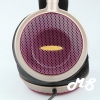-
Posts
3,359 -
Joined
-
Last visited
Reputation Activity
-
 creatip123 got a reaction from iM8Pizza in A simple way to clean and wash headphone's velour pads
creatip123 got a reaction from iM8Pizza in A simple way to clean and wash headphone's velour pads
First I just wanna say, these are by no means my original ideas. Found these on the net, tried it, and it works, so I thought I'd share it here. I'm sure lots of you have already know how to do this, but I'm sure there are those of you who don't know.
Pleather (plastic leather) pads are easy to clean. Just wipe with damp cloth, wipe again with dry cloth, and they should be clean right away.
Unfortunately, that's not the case with velour/cloth pads. Because it's cloth with hairy/furry surface, velour pads are prone to catch dirt (also dandruff) and absorb sweats. I live in a tropical country on the equatorial line, with average temperature ranging from 28C to 33C (sometimes 35, no kidding), and average humidity 70+%. With this kind of climate, dirt and sweats are inevitable in everyday life. My velour pads get dirty and sweaty very fast, so I need to clean them regularly.
*my velour pads got short hairs/furs, so they're a lot easier to clean. For very hairy/furry velour pads, like the pads of HD598 or Beyers', these may not work, and could even potentially damage the pads. So for those kind of pads, may need different ways of cleaning (maybe dry clean?)
For dry dirt and lints:
My velour pads can be taken off very easily. For velour pads that can't be taken off, this can also be done while they're attached. You can see how disgustingly dirty my pads are.... :wacko:
Rub the pads against each other in circular motions. Do it in both directions of rotation. This rotation movement will group the small dirt particles into larger ones, for easier cleaning. Also clap them occasionally, to blow away loose dirt. You can do it while the pads are still attached to the headphone, but just be careful not to put too much strain to the headband.
You can see the results. There are groups of larger dirt and lints. Still disgusting, by the way...
Next, get a sticky tape. Any kind will do, even duct tapes. I use clear plastic tapes, just because it's readily available near me. Make a loop around your fingers (3 or 4 fingers), with the sticky side facing outside.
Stick and pull at the velour pads. The sticky glue will pull the dirt and lints out of the pads. Depending on the actual condition of your pads, you may have to repeat this 2-3 times (get new loop of tapes)
You can see the sticky side of the tape is all used up, but my pads are still dirty, so I'd have to repeat this 2-3 times. But you can see the pad is much more cleaner compared to the pictures above.
That's how to clean dry dirt and lints. Now your velour pads will absorb sweats. As a result, they feel a bit damp, and most noticeably, smelly. I almost barfed at the smell of my own pads, before I clean them the first time... :unsure: So this is what I do to wash them:
This can only be done if the pads can be removed from the headphone. Do not ever ever ever try this while they're still attached on your headphone!! Sounds silly, but yeah, just in case...
Get a water container. Can be salad bowls, small buckets, or even a sink (plugged). I don't know what's the name in English, of that thing in my picture, but that's the thing we in Asia commonly use to take a bath Get a part of hot/boiling water. Usually I go with 1:2 ratio of hot water:tap water, 1 part hot water, 2 parts tap water. Depending on where you live, the tap water could be colder, which in that case, maybe go with 1:1 ratio. The goal is to get a hot water temperature of about the same as a hot spring (hot but not dangerously hot). Why hot water? Well, because soaps work better in high temperature. I use liquid shower soap. Don't use detergents, because detergents often contains additional chemicals that might ruin the pads. First, put in the hot/boiling water, put in the soap, and stir it until it mixes (foamy).
Add the tap water part.
Dip the pads in it, and let it sit for 15-30 minutes. Then pick them up, rub them in circular motions, and dip them in again. After the water gone cold (about 1 hour), take the pads out, rinse thoroughly with clean water. Press it against each other to get the excess water out. Don't install them right away, as they're still damp inside. Lay them face down on a piece of cloth, like t-shirt or something. Paper towels are no good, as they'll be soaked in no time. Let gravity pulls the excess water out, and it will air dry. I leave them over night to ensure they're perfectly dried before installing them on the headphone.
Done! You'll get a nice, soft, good smelling velour pads....until your sweats take over again....
-
 creatip123 got a reaction from Derkoli in [DIY]Stereo I/O AB Selector (image heavy)
creatip123 got a reaction from Derkoli in [DIY]Stereo I/O AB Selector (image heavy)
So I got a bit of a spare time, and I thought I'd do this project, because it's simple, cheap, and not too much time consuming.
For those of you who don't know what an AB selector is, it's a mechanism that lets you choose between 2 input/output (A or B with a very simple gesture, usually a button, or a switch. One example of application is if you got 1 sound output source, and you want to be able to choose where the signal output to, either to a speaker set, or a headphone. Another example is if you're doing an ABX test between 2 sources (usually 2 amps), you'd flick the switch back and forth to control which source is being send to your headphone. Well, enough theory....
This is all the 'ingridients' you'll need:
- small gauge cables. Of course the gauge is up to you, but smaller gauge is easier to work with and don't take up too much space. Get 3 colors, it'd make the work so much easier with color coded cables. I use red, black, and white.
- project box. Nothing special, just a plastic box with screws. You could use just about anything suitable, actually. Maybe a cookie box, altoids cans, or even a soda can.
- toggle switch
- 3x 3,5mm stereo jacks. You could also use 1/4" ones, if you want. It's the same thing, only larger
- 2x mini stereo to mini stereo, male to male cables
The project box is just a cheap plastic box with screws. There were some nice looking aluminium project boxes in the store, but I don't have metal drill bits, so I bought the plastic one instead.
Like I said above, this project is cheap, here's the rundown:
- cables, 1m each colors = 3m = 40 cents. You won't need the whole 1m long, but the minimum sale is 1m each.
- 3x mini stereo jacks = 80 cents
- toggle switch = $1.20
- project box = $1.20
- 2x male to male cables = $1.20
Total = $4.80. Yep, under 5 bucks. Needless to say, price may varies.
Equipment you'll need:
- Standard soldering stuffs (soldering gun, soldering iron, flux, etc)
- Scissor or wire stripper (either one is usable)
- Electric drill. If you don't have one, you could use an Xacto knife (more sweats and time consuming)
- Digital multimeter/DMM (optional, for a bit of testing only)
For stereo signals, you must get a toggle switch with 9 pins (3 channels per selection). it's a little harder to find, the regular ones are 6 pins. Radioshack should have them. Also there are 2 types of toggle switch. The on-on type, and the on-off-on type. The on-on type is the 'either' type, you must select 1 between 2 sources. The on-off-on type is the 'either-neither' type, you could select 1 between 2 sources, or you could select neither one (off position). Both types can be used. I bought the on-on type.
The 3,5mm stereo jack. Again, don't get the wrong one. Stereo jacks got 3 poles, like in the picture. Top pole is the ground, bottom poles are the left and right channels. If it only got 2 poles, then it's a mono jack. Actually, you don't have to know which pole is which channel. I'll tell you why later.
First, measure and mark the spots on the project box, where you'd want the switch and the jacks to be placed. Drill the spots with the correct diameter drill bit. You could also make holes with an Xacto knife, if you don't have access to an electric drill, but it's a lot harder. After the holes are ready, set aside the box for the moment, we'll prep the switch next.
Measure and cut the cables. This is why we drilled the holes first, so we can place the switch and jacks in their positions, to measure the correct length of the cables. I gave extra lengths on the cables, so later, if I want, I can disassemble it and install it in a bigger box. Strip the ends, and solder them to the poles in the switch. This is why color coding is important, so you'll recognize easily, which cable corresponds to which pole between the jacks. Like in the picture above, top row is all red, middle row is all black, and bottom row is all white. The columns are the selections. The middle one is the selection that doesn't change (the input or output that doesn't change). Left and right columns correspond to changing selections (input or output that you'd select). Sorry if it's confusing, it'll become clearer below.
Install all the jacks and the switch to the box via the holes. Bolt them tight to the box. In the picture above, the top jack is the static I/O one, while the left and right jacks are the I/O selection you'd select later via the toggle switch. In the case:
- 1 audio source, I wanna select between either the headphone or the speaker (1 input, 2 outputs). Plug the audio source to the top jack, the headphone and speaker to the left and right jacks (either one)
- 2 audio source, 1 audio output (2 inputs, 1 output), I wanna quick select which source I'm gonna listen to (for example, 2 amps). Plug my headphone to the top jack, and the 2 amps to the left and right jacks
Solder the cables to the poles on the jacks. My switch is a little strange. When I flick it to the left, it will select the right poles, and vice versa. I found out about this with the DMM. That's why in the wiring, I invert the cables. Left column to the right jack, and right column to the left jack.
Also, I said above that you don't have test each poles of the jacks to know which one is the left and which one is the right channel. As long as you use colored cables, just solder the same colors to the same poles of the jacks. In the picture above, the blacks to the middle poles, reds to the right poles, and whites to the left poles. The right jack's cabling in the picture was inverted (which I found out after I took the picture). The red cable should have been soldered to the right pole, and the white to the left pole. It's easily fixed later though. Test it first, before closing the box.
If it works as expected, then close it and install the screws to the box. This is the finished project.
The top plug is my headphone's plug, the left and right cables would run to 2 different sources (2 inputs, 1 output), for example, 2 different amps, for ABX testing.
Application example: comparing 2 different amps, the built-in amp of the T1 (left) and Lepai 2020A+. The lepai got its source signal from T1's line out (the blue transparent cable). Don't follow this setup though. I can use the Lepai because the headphone is planar. With dynamic driver headphones, there's a chance your headphone will fry on the spot....
Total time I took, as an amateur in electronic projects: ~1,5 hours. Of course it will take less time if you're already good at electronic projects.
Hope this is helpful...
-
 creatip123 got a reaction from infamous_last in The Impedance Ballad (image heavy)
creatip123 got a reaction from infamous_last in The Impedance Ballad (image heavy)
There have been lots of people with the mindset of 'the higher the impedance of a headphone, the harder it is to drive them, or the harder it is to push it louder'. Consequently, this leads to the mindset of 'the higher the impedance of a headphone, the more it needs an amp'
It's been said a lot of times in a lot of topics here. The regulars here always go against this mindset, but of course with words alone, it's kinda like a 3rd grader's argument. Something like, 'afraid not....' 'afraid so....'
Well, I thought of a simple and rough experiment, for this matter. For the base theory, let's just go with that mindset for a while,
That's the base theory, so let's see if it applies to the reality.
For this experiment, I'd need some sort of loudness measuring device. This is what I'm using:
It's just a regular sound level meter. It will 'listen' to ambient sound, and calculate the average (A weighted) loudness.
These are the specs:
It got 'MAX' function, which is it will hold a max value of measurement.
It will 'listen' through this microphone.
Now this is an ambient sound level, right? That means, it's quite sensitive, and it will pick up lots of ambient noises. For this, I need a way to give it some kind of sound insulation.
This is the insulation. It's just a plain handycraft foam sheets, 12x12cm, 3 layers stacked. Cut a hole in the middle for the microphone to sit in.
This is how it looks.
This is how it's implemented. So I covered the pads of the headphones for testing with the foam insulation, and take the measurements. The foam minimizes sounds leaking in and out of the headphone.
Yeah, so I got the measurement device ready. Next I'd need the test subjects, right?
These are all the headphones I got with me, sorted from the smallest impedance on the left, to highest impedance on the right.
1. ATH-AD700: 32 ohms (http://eu.audio-technica.com/en/products/product.asp?catID=5&subID=37&prodID=156)
2. Hifiman HE400: 35 ohms (http://www.head-direct.com/Products/?act=detail&id=115)
3. AKG Q701: 62 ohms (http://eu.akg.com/akg-product-detail_eu/q-701.html => click the 'specsheet' link)
4. Krezt DJ-9200 (local brand, China generic): 64 ohms (http://krezt.co.id/v3/?product=krezt-dj-9200)
So....it's already sorted out from smallest (32 ohms) to biggest/highest (64 ohms) impedance. According to the base theory, with the same source device, and same volume setting, it will sound the loudest on the 32 ohms one, and least loud on the 64 ohms, right? Well, let's see....
Measurement device ready, test subjects ready, next I'd need a source device. I'm not gonna use my PC, ipad, or some random DAP or amps. Instead, I'm gonna use this:
Good ol' Nokia 2730 classic. It's discontinued. It's just a plain basic phone. No touch screens, no iOS or android, hell it doesn't even have wi-fi capability, and can't play any videos. I bought it for $35 or so. The latest price I found on google is $50 or something. At least it got an MP3 player function, and a 3.5mm audio jack. I'd be plugging the test headphones directly to this phone, set the volume to max, with no amp in-between.
This is the test track I'm using:
Obviously, the MP3 version, not the video, because of the phone's limitation.
Why do I use a trance song? Why not a sine tone, something like 1kHz sine tone or something? Well, it's because the headphones got different frequency responses, so I thought it'd be better to get an average reading of various frequencies, rather than 1 particular tone.
So it's all set, played the song for 30 seconds from the beginning. With the sound meter's 'MAX' function, it will lock and display the maximum loudness it measured.
Moment of truth, the results, sorted from number 1 to 4. Remember, same source, same volume, same test track, same sound meter, same method of testing:
AD700: 91.8 dB
HE400: 83.1 dB. So far so good, it went according to the base theory. Because HE400 is 35 ohms, so it's less loud than the 32 ohms AD700, right?
Q701: 83.2 dB. Hmmm that's strange. 35 ohms to 62 ohms impedance is quite a leap. So the Q701 should be considerably less loud than the HE400, right? Then why the hell did it measure basically the same as HE400 (let's waive the 0.1dB, chalk it to difference in frequency response)??
Krezt: 103.4 dB. Hot damn, I've broken a law of physics here. The highest impedance of all 4 test subjects is actually the loudest!! Yay, the 64 ohms headphone is 11dB louder than the headphone with half its impedance, 32 ohms.....
What gives, dude?
Seems like the base theory of 'the higher the impedance of a headphone, the harder it is to drive it louder, the more it needs an amp' is on the brink of being debunked. Oh man, the world's coming to an end....
Sooooo....if impedance is not the determining factor, then there have to be another determining factor, right? After all, the universe is bound to orderly laws of physics.
So let's look at one other rating of the headphones, which is the sensitivity/efficiency. Something that looks like 'X dB', or 'Y dB/mW', or 'Z dB/V'.
1. AD700: 98 dB/mW
2. HE400: 93.5 dB/mW
3. Q701: 105 dB/V => this is not the same as dB/mW. To be able to measure it in the same context, this have to be converted to dB/mW, which results in ~93 dB/mW
4. Krezt DJ-9200: 107 dB/mW
Oh wow, now it all make sense!!. Using the order of the sensitivity ratings, the order of the least loud to loudest is: 2 or 3 (about the same ratings and measurements) - 1 - 4. This corresponds with the test results in the pictures.
So what is this efficiency/sensitivity? In a nutshell:
Just by the definition of the efficiency/sensitivity, it's already quite obvious that when we're talking about loudness, or how loud it will go, efficiency/sensitivity is the more important, and most determining factor.
So at this point, I think we could all agree now that 'impedance rating' is NOT the determining factor of how easy or hard it is to drive a headphone to the desired loudness. Here's a fun trivia fact: the hardest to drive headphone in the market, the Hifiman HE-6, is only 50 ohms. Even less impedance than the Krezt DJ-9200.
So the next time you see someone posting something like, 'My headphone is 250 ohms, so it DEFINITELY needs an amp. If only my headphone is 32 ohms, I won't need an amp at all', hope you'd remember this topic and this simple experiment...
-
 creatip123 got a reaction from Ningols in PU Leather vs Velour pads: Sound Quality
creatip123 got a reaction from Ningols in PU Leather vs Velour pads: Sound Quality
First post at 10:17, and 17 minutes later jumped to the conclusion that this forum is dead, because no one is replying.
I'm actually amazed that you're ok with buying stuffs online. You know, with all the waiting for the stuff to arrive...
-
 creatip123 got a reaction from ICantThinkOfAnyGoodName in The Impedance Ballad (image heavy)
creatip123 got a reaction from ICantThinkOfAnyGoodName in The Impedance Ballad (image heavy)
There have been lots of people with the mindset of 'the higher the impedance of a headphone, the harder it is to drive them, or the harder it is to push it louder'. Consequently, this leads to the mindset of 'the higher the impedance of a headphone, the more it needs an amp'
It's been said a lot of times in a lot of topics here. The regulars here always go against this mindset, but of course with words alone, it's kinda like a 3rd grader's argument. Something like, 'afraid not....' 'afraid so....'
Well, I thought of a simple and rough experiment, for this matter. For the base theory, let's just go with that mindset for a while,
That's the base theory, so let's see if it applies to the reality.
For this experiment, I'd need some sort of loudness measuring device. This is what I'm using:
It's just a regular sound level meter. It will 'listen' to ambient sound, and calculate the average (A weighted) loudness.
These are the specs:
It got 'MAX' function, which is it will hold a max value of measurement.
It will 'listen' through this microphone.
Now this is an ambient sound level, right? That means, it's quite sensitive, and it will pick up lots of ambient noises. For this, I need a way to give it some kind of sound insulation.
This is the insulation. It's just a plain handycraft foam sheets, 12x12cm, 3 layers stacked. Cut a hole in the middle for the microphone to sit in.
This is how it looks.
This is how it's implemented. So I covered the pads of the headphones for testing with the foam insulation, and take the measurements. The foam minimizes sounds leaking in and out of the headphone.
Yeah, so I got the measurement device ready. Next I'd need the test subjects, right?
These are all the headphones I got with me, sorted from the smallest impedance on the left, to highest impedance on the right.
1. ATH-AD700: 32 ohms (http://eu.audio-technica.com/en/products/product.asp?catID=5&subID=37&prodID=156)
2. Hifiman HE400: 35 ohms (http://www.head-direct.com/Products/?act=detail&id=115)
3. AKG Q701: 62 ohms (http://eu.akg.com/akg-product-detail_eu/q-701.html => click the 'specsheet' link)
4. Krezt DJ-9200 (local brand, China generic): 64 ohms (http://krezt.co.id/v3/?product=krezt-dj-9200)
So....it's already sorted out from smallest (32 ohms) to biggest/highest (64 ohms) impedance. According to the base theory, with the same source device, and same volume setting, it will sound the loudest on the 32 ohms one, and least loud on the 64 ohms, right? Well, let's see....
Measurement device ready, test subjects ready, next I'd need a source device. I'm not gonna use my PC, ipad, or some random DAP or amps. Instead, I'm gonna use this:
Good ol' Nokia 2730 classic. It's discontinued. It's just a plain basic phone. No touch screens, no iOS or android, hell it doesn't even have wi-fi capability, and can't play any videos. I bought it for $35 or so. The latest price I found on google is $50 or something. At least it got an MP3 player function, and a 3.5mm audio jack. I'd be plugging the test headphones directly to this phone, set the volume to max, with no amp in-between.
This is the test track I'm using:
Obviously, the MP3 version, not the video, because of the phone's limitation.
Why do I use a trance song? Why not a sine tone, something like 1kHz sine tone or something? Well, it's because the headphones got different frequency responses, so I thought it'd be better to get an average reading of various frequencies, rather than 1 particular tone.
So it's all set, played the song for 30 seconds from the beginning. With the sound meter's 'MAX' function, it will lock and display the maximum loudness it measured.
Moment of truth, the results, sorted from number 1 to 4. Remember, same source, same volume, same test track, same sound meter, same method of testing:
AD700: 91.8 dB
HE400: 83.1 dB. So far so good, it went according to the base theory. Because HE400 is 35 ohms, so it's less loud than the 32 ohms AD700, right?
Q701: 83.2 dB. Hmmm that's strange. 35 ohms to 62 ohms impedance is quite a leap. So the Q701 should be considerably less loud than the HE400, right? Then why the hell did it measure basically the same as HE400 (let's waive the 0.1dB, chalk it to difference in frequency response)??
Krezt: 103.4 dB. Hot damn, I've broken a law of physics here. The highest impedance of all 4 test subjects is actually the loudest!! Yay, the 64 ohms headphone is 11dB louder than the headphone with half its impedance, 32 ohms.....
What gives, dude?
Seems like the base theory of 'the higher the impedance of a headphone, the harder it is to drive it louder, the more it needs an amp' is on the brink of being debunked. Oh man, the world's coming to an end....
Sooooo....if impedance is not the determining factor, then there have to be another determining factor, right? After all, the universe is bound to orderly laws of physics.
So let's look at one other rating of the headphones, which is the sensitivity/efficiency. Something that looks like 'X dB', or 'Y dB/mW', or 'Z dB/V'.
1. AD700: 98 dB/mW
2. HE400: 93.5 dB/mW
3. Q701: 105 dB/V => this is not the same as dB/mW. To be able to measure it in the same context, this have to be converted to dB/mW, which results in ~93 dB/mW
4. Krezt DJ-9200: 107 dB/mW
Oh wow, now it all make sense!!. Using the order of the sensitivity ratings, the order of the least loud to loudest is: 2 or 3 (about the same ratings and measurements) - 1 - 4. This corresponds with the test results in the pictures.
So what is this efficiency/sensitivity? In a nutshell:
Just by the definition of the efficiency/sensitivity, it's already quite obvious that when we're talking about loudness, or how loud it will go, efficiency/sensitivity is the more important, and most determining factor.
So at this point, I think we could all agree now that 'impedance rating' is NOT the determining factor of how easy or hard it is to drive a headphone to the desired loudness. Here's a fun trivia fact: the hardest to drive headphone in the market, the Hifiman HE-6, is only 50 ohms. Even less impedance than the Krezt DJ-9200.
So the next time you see someone posting something like, 'My headphone is 250 ohms, so it DEFINITELY needs an amp. If only my headphone is 32 ohms, I won't need an amp at all', hope you'd remember this topic and this simple experiment...
-
 creatip123 got a reaction from ShearMe in The Impedance Ballad (image heavy)
creatip123 got a reaction from ShearMe in The Impedance Ballad (image heavy)
There have been lots of people with the mindset of 'the higher the impedance of a headphone, the harder it is to drive them, or the harder it is to push it louder'. Consequently, this leads to the mindset of 'the higher the impedance of a headphone, the more it needs an amp'
It's been said a lot of times in a lot of topics here. The regulars here always go against this mindset, but of course with words alone, it's kinda like a 3rd grader's argument. Something like, 'afraid not....' 'afraid so....'
Well, I thought of a simple and rough experiment, for this matter. For the base theory, let's just go with that mindset for a while,
That's the base theory, so let's see if it applies to the reality.
For this experiment, I'd need some sort of loudness measuring device. This is what I'm using:
It's just a regular sound level meter. It will 'listen' to ambient sound, and calculate the average (A weighted) loudness.
These are the specs:
It got 'MAX' function, which is it will hold a max value of measurement.
It will 'listen' through this microphone.
Now this is an ambient sound level, right? That means, it's quite sensitive, and it will pick up lots of ambient noises. For this, I need a way to give it some kind of sound insulation.
This is the insulation. It's just a plain handycraft foam sheets, 12x12cm, 3 layers stacked. Cut a hole in the middle for the microphone to sit in.
This is how it looks.
This is how it's implemented. So I covered the pads of the headphones for testing with the foam insulation, and take the measurements. The foam minimizes sounds leaking in and out of the headphone.
Yeah, so I got the measurement device ready. Next I'd need the test subjects, right?
These are all the headphones I got with me, sorted from the smallest impedance on the left, to highest impedance on the right.
1. ATH-AD700: 32 ohms (http://eu.audio-technica.com/en/products/product.asp?catID=5&subID=37&prodID=156)
2. Hifiman HE400: 35 ohms (http://www.head-direct.com/Products/?act=detail&id=115)
3. AKG Q701: 62 ohms (http://eu.akg.com/akg-product-detail_eu/q-701.html => click the 'specsheet' link)
4. Krezt DJ-9200 (local brand, China generic): 64 ohms (http://krezt.co.id/v3/?product=krezt-dj-9200)
So....it's already sorted out from smallest (32 ohms) to biggest/highest (64 ohms) impedance. According to the base theory, with the same source device, and same volume setting, it will sound the loudest on the 32 ohms one, and least loud on the 64 ohms, right? Well, let's see....
Measurement device ready, test subjects ready, next I'd need a source device. I'm not gonna use my PC, ipad, or some random DAP or amps. Instead, I'm gonna use this:
Good ol' Nokia 2730 classic. It's discontinued. It's just a plain basic phone. No touch screens, no iOS or android, hell it doesn't even have wi-fi capability, and can't play any videos. I bought it for $35 or so. The latest price I found on google is $50 or something. At least it got an MP3 player function, and a 3.5mm audio jack. I'd be plugging the test headphones directly to this phone, set the volume to max, with no amp in-between.
This is the test track I'm using:
Obviously, the MP3 version, not the video, because of the phone's limitation.
Why do I use a trance song? Why not a sine tone, something like 1kHz sine tone or something? Well, it's because the headphones got different frequency responses, so I thought it'd be better to get an average reading of various frequencies, rather than 1 particular tone.
So it's all set, played the song for 30 seconds from the beginning. With the sound meter's 'MAX' function, it will lock and display the maximum loudness it measured.
Moment of truth, the results, sorted from number 1 to 4. Remember, same source, same volume, same test track, same sound meter, same method of testing:
AD700: 91.8 dB
HE400: 83.1 dB. So far so good, it went according to the base theory. Because HE400 is 35 ohms, so it's less loud than the 32 ohms AD700, right?
Q701: 83.2 dB. Hmmm that's strange. 35 ohms to 62 ohms impedance is quite a leap. So the Q701 should be considerably less loud than the HE400, right? Then why the hell did it measure basically the same as HE400 (let's waive the 0.1dB, chalk it to difference in frequency response)??
Krezt: 103.4 dB. Hot damn, I've broken a law of physics here. The highest impedance of all 4 test subjects is actually the loudest!! Yay, the 64 ohms headphone is 11dB louder than the headphone with half its impedance, 32 ohms.....
What gives, dude?
Seems like the base theory of 'the higher the impedance of a headphone, the harder it is to drive it louder, the more it needs an amp' is on the brink of being debunked. Oh man, the world's coming to an end....
Sooooo....if impedance is not the determining factor, then there have to be another determining factor, right? After all, the universe is bound to orderly laws of physics.
So let's look at one other rating of the headphones, which is the sensitivity/efficiency. Something that looks like 'X dB', or 'Y dB/mW', or 'Z dB/V'.
1. AD700: 98 dB/mW
2. HE400: 93.5 dB/mW
3. Q701: 105 dB/V => this is not the same as dB/mW. To be able to measure it in the same context, this have to be converted to dB/mW, which results in ~93 dB/mW
4. Krezt DJ-9200: 107 dB/mW
Oh wow, now it all make sense!!. Using the order of the sensitivity ratings, the order of the least loud to loudest is: 2 or 3 (about the same ratings and measurements) - 1 - 4. This corresponds with the test results in the pictures.
So what is this efficiency/sensitivity? In a nutshell:
Just by the definition of the efficiency/sensitivity, it's already quite obvious that when we're talking about loudness, or how loud it will go, efficiency/sensitivity is the more important, and most determining factor.
So at this point, I think we could all agree now that 'impedance rating' is NOT the determining factor of how easy or hard it is to drive a headphone to the desired loudness. Here's a fun trivia fact: the hardest to drive headphone in the market, the Hifiman HE-6, is only 50 ohms. Even less impedance than the Krezt DJ-9200.
So the next time you see someone posting something like, 'My headphone is 250 ohms, so it DEFINITELY needs an amp. If only my headphone is 32 ohms, I won't need an amp at all', hope you'd remember this topic and this simple experiment...
-
 creatip123 got a reaction from rhyseyness in Calculating Audeze LCD 2's Power Requirement vs O2
creatip123 got a reaction from rhyseyness in Calculating Audeze LCD 2's Power Requirement vs O2
Woootttt....you're not even gonna ask me who he was, or whether he was credible enough.....(hint: come on....ask me.... )
Ummm....we spoke face to face, not by e-mails.
-
 creatip123 got a reaction from JPopJRockFanatic in The Impedance Ballad (image heavy)
creatip123 got a reaction from JPopJRockFanatic in The Impedance Ballad (image heavy)
There have been lots of people with the mindset of 'the higher the impedance of a headphone, the harder it is to drive them, or the harder it is to push it louder'. Consequently, this leads to the mindset of 'the higher the impedance of a headphone, the more it needs an amp'
It's been said a lot of times in a lot of topics here. The regulars here always go against this mindset, but of course with words alone, it's kinda like a 3rd grader's argument. Something like, 'afraid not....' 'afraid so....'
Well, I thought of a simple and rough experiment, for this matter. For the base theory, let's just go with that mindset for a while,
That's the base theory, so let's see if it applies to the reality.
For this experiment, I'd need some sort of loudness measuring device. This is what I'm using:
It's just a regular sound level meter. It will 'listen' to ambient sound, and calculate the average (A weighted) loudness.
These are the specs:
It got 'MAX' function, which is it will hold a max value of measurement.
It will 'listen' through this microphone.
Now this is an ambient sound level, right? That means, it's quite sensitive, and it will pick up lots of ambient noises. For this, I need a way to give it some kind of sound insulation.
This is the insulation. It's just a plain handycraft foam sheets, 12x12cm, 3 layers stacked. Cut a hole in the middle for the microphone to sit in.
This is how it looks.
This is how it's implemented. So I covered the pads of the headphones for testing with the foam insulation, and take the measurements. The foam minimizes sounds leaking in and out of the headphone.
Yeah, so I got the measurement device ready. Next I'd need the test subjects, right?
These are all the headphones I got with me, sorted from the smallest impedance on the left, to highest impedance on the right.
1. ATH-AD700: 32 ohms (http://eu.audio-technica.com/en/products/product.asp?catID=5&subID=37&prodID=156)
2. Hifiman HE400: 35 ohms (http://www.head-direct.com/Products/?act=detail&id=115)
3. AKG Q701: 62 ohms (http://eu.akg.com/akg-product-detail_eu/q-701.html => click the 'specsheet' link)
4. Krezt DJ-9200 (local brand, China generic): 64 ohms (http://krezt.co.id/v3/?product=krezt-dj-9200)
So....it's already sorted out from smallest (32 ohms) to biggest/highest (64 ohms) impedance. According to the base theory, with the same source device, and same volume setting, it will sound the loudest on the 32 ohms one, and least loud on the 64 ohms, right? Well, let's see....
Measurement device ready, test subjects ready, next I'd need a source device. I'm not gonna use my PC, ipad, or some random DAP or amps. Instead, I'm gonna use this:
Good ol' Nokia 2730 classic. It's discontinued. It's just a plain basic phone. No touch screens, no iOS or android, hell it doesn't even have wi-fi capability, and can't play any videos. I bought it for $35 or so. The latest price I found on google is $50 or something. At least it got an MP3 player function, and a 3.5mm audio jack. I'd be plugging the test headphones directly to this phone, set the volume to max, with no amp in-between.
This is the test track I'm using:
Obviously, the MP3 version, not the video, because of the phone's limitation.
Why do I use a trance song? Why not a sine tone, something like 1kHz sine tone or something? Well, it's because the headphones got different frequency responses, so I thought it'd be better to get an average reading of various frequencies, rather than 1 particular tone.
So it's all set, played the song for 30 seconds from the beginning. With the sound meter's 'MAX' function, it will lock and display the maximum loudness it measured.
Moment of truth, the results, sorted from number 1 to 4. Remember, same source, same volume, same test track, same sound meter, same method of testing:
AD700: 91.8 dB
HE400: 83.1 dB. So far so good, it went according to the base theory. Because HE400 is 35 ohms, so it's less loud than the 32 ohms AD700, right?
Q701: 83.2 dB. Hmmm that's strange. 35 ohms to 62 ohms impedance is quite a leap. So the Q701 should be considerably less loud than the HE400, right? Then why the hell did it measure basically the same as HE400 (let's waive the 0.1dB, chalk it to difference in frequency response)??
Krezt: 103.4 dB. Hot damn, I've broken a law of physics here. The highest impedance of all 4 test subjects is actually the loudest!! Yay, the 64 ohms headphone is 11dB louder than the headphone with half its impedance, 32 ohms.....
What gives, dude?
Seems like the base theory of 'the higher the impedance of a headphone, the harder it is to drive it louder, the more it needs an amp' is on the brink of being debunked. Oh man, the world's coming to an end....
Sooooo....if impedance is not the determining factor, then there have to be another determining factor, right? After all, the universe is bound to orderly laws of physics.
So let's look at one other rating of the headphones, which is the sensitivity/efficiency. Something that looks like 'X dB', or 'Y dB/mW', or 'Z dB/V'.
1. AD700: 98 dB/mW
2. HE400: 93.5 dB/mW
3. Q701: 105 dB/V => this is not the same as dB/mW. To be able to measure it in the same context, this have to be converted to dB/mW, which results in ~93 dB/mW
4. Krezt DJ-9200: 107 dB/mW
Oh wow, now it all make sense!!. Using the order of the sensitivity ratings, the order of the least loud to loudest is: 2 or 3 (about the same ratings and measurements) - 1 - 4. This corresponds with the test results in the pictures.
So what is this efficiency/sensitivity? In a nutshell:
Just by the definition of the efficiency/sensitivity, it's already quite obvious that when we're talking about loudness, or how loud it will go, efficiency/sensitivity is the more important, and most determining factor.
So at this point, I think we could all agree now that 'impedance rating' is NOT the determining factor of how easy or hard it is to drive a headphone to the desired loudness. Here's a fun trivia fact: the hardest to drive headphone in the market, the Hifiman HE-6, is only 50 ohms. Even less impedance than the Krezt DJ-9200.
So the next time you see someone posting something like, 'My headphone is 250 ohms, so it DEFINITELY needs an amp. If only my headphone is 32 ohms, I won't need an amp at all', hope you'd remember this topic and this simple experiment...
-
 creatip123 got a reaction from Dingus in [DIY]Stereo I/O AB Selector (image heavy)
creatip123 got a reaction from Dingus in [DIY]Stereo I/O AB Selector (image heavy)
I think the benefit of using a good pot rather than a bad pot is that a bad pot will sometimes have channel imbalance, and they get dirty quite fast. When it's dirty, when you turn it up or down, it will sound 'krrrssskkkk' or something like that.
A renowned (good) brand of audio pots is the ALPS pot.
Value doesn't really matters. The concept is: a pot is a variable resistor which the user can set the resistance between 0 to X ohms. 0 ohms = passthrough, it theoretically doesn't do anything to the volume. The X ohms determines how low the loudness will go, or how quiet. If the X is not big enough, you'll still get some sound, even after you turn it all the way down. If the X is too big, from the all the way down position, you'll still have silent after you turn it a few degrees up. In both cases, the pots will still function and usable.
Just make sure the pot is usable for stereo (3 polarities), i.e. got 6 legs. 4 legged pots are also usable, just bypass the ground wire.
-
 creatip123 got a reaction from tribaljet in Flacs vs Mp3's
creatip123 got a reaction from tribaljet in Flacs vs Mp3's
If not taking into account the scale of differences, I actually agrees with him, and in audible spectrum of course. The (audible) differences are there, just in tiny scale. I'd say it's like wearing 100% cotton shirt vs 90% cotton + 10% polyester (or something) shirt. Is it different? Yes. Can you feel it? On and off for me, but maybe someone somewhere can. Is it worth the extra money? Not for me, dunno about others.
-
 creatip123 got a reaction from KaminKevCrew in Flacs vs Mp3's
creatip123 got a reaction from KaminKevCrew in Flacs vs Mp3's
If not taking into account the scale of differences, I actually agrees with him, and in audible spectrum of course. The (audible) differences are there, just in tiny scale. I'd say it's like wearing 100% cotton shirt vs 90% cotton + 10% polyester (or something) shirt. Is it different? Yes. Can you feel it? On and off for me, but maybe someone somewhere can. Is it worth the extra money? Not for me, dunno about others.
-
 creatip123 got a reaction from Footy in Flacs vs Mp3's
creatip123 got a reaction from Footy in Flacs vs Mp3's
First off, why are you complaining? Nobody was telling you to run errands or do what you don't want to do. Make it clear first, the 'taking it to HA', is it what I want or what you want? Because I never said or implied anything even remotely close to 'taking it to HA'. Now if it's what you want, why are you complaining to me?
The plot is very simple, I said yes, you said no. I said I'm ready and willing to give the test subjects, testing methods, and procedures for you to recreate. You're free to make your choice. You want to challenge my test data or methods or results, sure, why not. I like to be challenged, as that's one of many ways to learn. If I'm proven wrong, then I'll say I'm wrong. You want/need to ask somebody else (in this case, people in HA), that's your privilege, not your liability. Hell even if you wanna take this all the way up to MIT, then go ahead. Just don't put it on me, because I never told you to do anything you don't want to.
The way the wording is, it sounds as if what you're saying is 'You're wrong. I don't know what or how, but you're still wrong. To know what or how, I need to ask more knowledgeable people, but I don't want to, so stop asking me to prove you're wrong and just accept that you're wrong'
-
 creatip123 got a reaction from Footy in Flacs vs Mp3's
creatip123 got a reaction from Footy in Flacs vs Mp3's
If not taking into account the scale of differences, I actually agrees with him, and in audible spectrum of course. The (audible) differences are there, just in tiny scale. I'd say it's like wearing 100% cotton shirt vs 90% cotton + 10% polyester (or something) shirt. Is it different? Yes. Can you feel it? On and off for me, but maybe someone somewhere can. Is it worth the extra money? Not for me, dunno about others.
-
 creatip123 got a reaction from GlassBomb in 10 year old iPod - Need to replace it
creatip123 got a reaction from GlassBomb in 10 year old iPod - Need to replace it
Second this. AK240 is the way to go for limitless budget. Unless they released newer ones, like AK240 II maybe.
-
 creatip123 got a reaction from Tac127 in 7.1 Headphones?
creatip123 got a reaction from Tac127 in 7.1 Headphones?
Thought I'll add this one:
Although it's a sponsor video, the knowledge part is actually pretty good and easy to understand.
-
 creatip123 got a reaction from Fluffinator in Good Portable Headphone Amp
creatip123 got a reaction from Fluffinator in Good Portable Headphone Amp
Actually, I think just the E07k should be enough. E11k got better amp (better sound, cleaner, and stuffs), but as for power, it should be pretty much the same as E07k.
-
 creatip123 got a reaction from DigitalHermit in So I won Beats in a raffle...
creatip123 got a reaction from DigitalHermit in So I won Beats in a raffle...
I believe the original opinion was actually, beats are crap....for their price range. Later on, it's shorten to simply 'beats are crap'.
It's true that it's all gotta put into contexts. For example, razer products are decent. I'd get one if it's below $20. But because they're between $50 to $200(?), then yeah, they're crap...for the price.
-
 creatip123 got a reaction from DigitalHermit in So I won Beats in a raffle...
creatip123 got a reaction from DigitalHermit in So I won Beats in a raffle...
Even if it's decent, it's still overpriced compared to the competition. So don't open it, sell it as 100% new, and buy a new one.
If you got like $200 from selling it, get the MDR-1R, it's discontinued, but apparently amazon still has them. Otherwise, just take your time and pick which one you'd like.
-
 creatip123 got a reaction from Fluffinator in HE-400s where does it lie?
creatip123 got a reaction from Fluffinator in HE-400s where does it lie?
I knew it....HE400s, that lying son of a.....
But seriously, 'one of the highest efficiency planar in the world'?? Really? Do they have any idea that LCD-3 is 102dB/mW??
-
 creatip123 got a reaction from JackTham in Plantronics GameCom 777 or equally good !
creatip123 got a reaction from JackTham in Plantronics GameCom 777 or equally good !
Gotta understand first what those '5.1 surround' and '7.1 surround headset' means and how they work. http://linustechtips.com/main/topic/331886-71-headphones/
-
 creatip123 got a reaction from weez in dt 770 vs astro a40 vs astro a50 vs m50x. boooooooooom
creatip123 got a reaction from weez in dt 770 vs astro a40 vs astro a50 vs m50x. boooooooooom
To add this, people often got the logic backwards. People tends to think, 'he/she became good because of that thing' (which is what the sponsors want), but in reality, he/she is already THAT good that whatever he/she is wearing they will still be good.
-
 creatip123 got a reaction from KaminKevCrew in ATH-M50x Do they benefit from an amp?
creatip123 got a reaction from KaminKevCrew in ATH-M50x Do they benefit from an amp?
It's not just that there's no reason at all. Furthermore, most, if not all, digital audio players (including PC) I know of can only use 1 DAC at a time. So it's either one, not both at the same time, at least not as an integrated system.
So it's either the soundcard, or the external dac, or both playing different sounds to different outputs, but never both working together playing the same sounds.
We joked about this in a few topics a while back, wouldn't it be wonderful if we can firewire a few DACs, creating a 64bit/768kHz out of 4x 16bit/192kHz DACs....
-
 creatip123 got a reaction from KaminKevCrew in ATH-M50x Do they benefit from an amp?
creatip123 got a reaction from KaminKevCrew in ATH-M50x Do they benefit from an amp?
Things can be funny and made you wanna shed tears at the same time....
-
 creatip123 got a reaction from KaminKevCrew in ATH-M50x Do they benefit from an amp?
creatip123 got a reaction from KaminKevCrew in ATH-M50x Do they benefit from an amp?
Huh??
A soundcard already convert digital music files to analog signals. So you wanna send that analog signal to another digital to analog converter? But then, because a digital to analog converter can only accept digital inputs, so then you must put in another analog to digital converter in between? So the chain would be digital => soundcard => analog => analog to digital converter => digital => digital to analog converter => analog => headphone??
Wait, you know what, nevermind. I forgot how much energy I'd have wasted trying to reason with self proclaimed audiophiles......
-
 creatip123 got a reaction from Fluffinator in ATH-M50x Do they benefit from an amp?
creatip123 got a reaction from Fluffinator in ATH-M50x Do they benefit from an amp?
I posted in an old topic, and there's a topic in head-fi that said the same thing. Try doing the philips golden ears challenge all the way to the end. You'll get a certificate/award for completing at the end.
There are a lot of self proclaimed 'audiophile' who said their ears are diamond, but can't get pass the silver ears stages of that challenge. Of course after failing, usually they go on blaming the sound source, the tests itself, etc, etc.
I'm a noob, and I got the certificate. Now how can one proclaim him/herself a legit 'audiophile', if they can't even outperform a simple noob's ears....
















